I may be the last person to know this, but I recently discovered that the Eiffel Tower has been transmitting radio broadcasts for over 100 years!
Once again, I came upon this information by accident. I was looking up an old photographic exhibit in Paris from 1928, when on the same page of the newspaper was a list of various radio programming in Paris, including the Eiffel Tower!
The Eiffel Tower was unveiled at the Universal Exhibition in Paris in 1889. Its architect, Gustave Eiffel, was given a 20-year land permit by the government to build it. After that, it would be handed back to the City of Paris to do with it what it wanted.
I was surprised to learn that by 1900, another year Paris hosted the Universal Exhibition, people weren’t that interested in the Eiffel Tower. It obscured the skyline and was ‘old news’ by then.
To prevent the tower from being torn down, Gustave Eiffel worked to find a scientific or technical reason to keep it standing. So, he and a team of radio engineers created a system for the tower to transmit and receive radio signals.
The Eiffel Tower website explains it:
On 5 November 1898, Eugène Ducretet established the very first radio contact in Morse code between the Eiffel Tower and the Pantheon, four kilometers away. A transmitting station was then installed permanently on the Tower. In 1899, it enabled radio transmissions with London.
Eventually, they were able to transmit a signal as far as 6,000 kilometers away. This gave the Eiffel Tower the validation it needed to keep it standing steady.
The Eiffel Tower’s radio capability proved very useful during times of war. In 1918, during World War I, it helped intercept communications from the Germans, allowing the French military to thwart a major attack that led to the end of the war. After that, the military continued to use the tower to transmit coded messages when needed.
Then, one of France’s pioneers of radio technology, General Gustave-Auguste Ferrié, wanted to create a means for broadcasting to the public. With his ingenuity, by the end of 1921, the Eiffel Tower embarked upon its maiden voyage of public broadcasting. There weren’t many listeners, because not a lot of people had a radio receiver, but that changed over time.
The debut broadcast included well-known musicians, including singers Yvonne Printemps and Jean Noté.

Just for fun, I found recordings of both of them singing in archived recordings:
Yvonne Printemps singing an operetta in 1955: Listen here
Jean Noté singing Le Noel des gueux in the early 20th century: Listen here
Radio Tour Eiffel featured music, weather reports, and a press review. In 1922, a daily broadcast was scheduled from 2:30pm to 5pm. This changed over time because the broadcasts in 1928 - like the one advertised below - were in the evening.
Today, the Eiffel Tower continues to be the conduit for French broadcasts, including more than 45 television stations and more than 30 FM stations.
The main takeaway from all this is that if it weren’t for radio broadcasts, the Eiffel Tower may have had a much shorter lifespan. Quel horreur!
Sources:
Eiffel Tower radio history (English)
Eiffel Tower radio history (French)
RFI (English): Eiffel Tower celebrates a centenary of radio broadcast



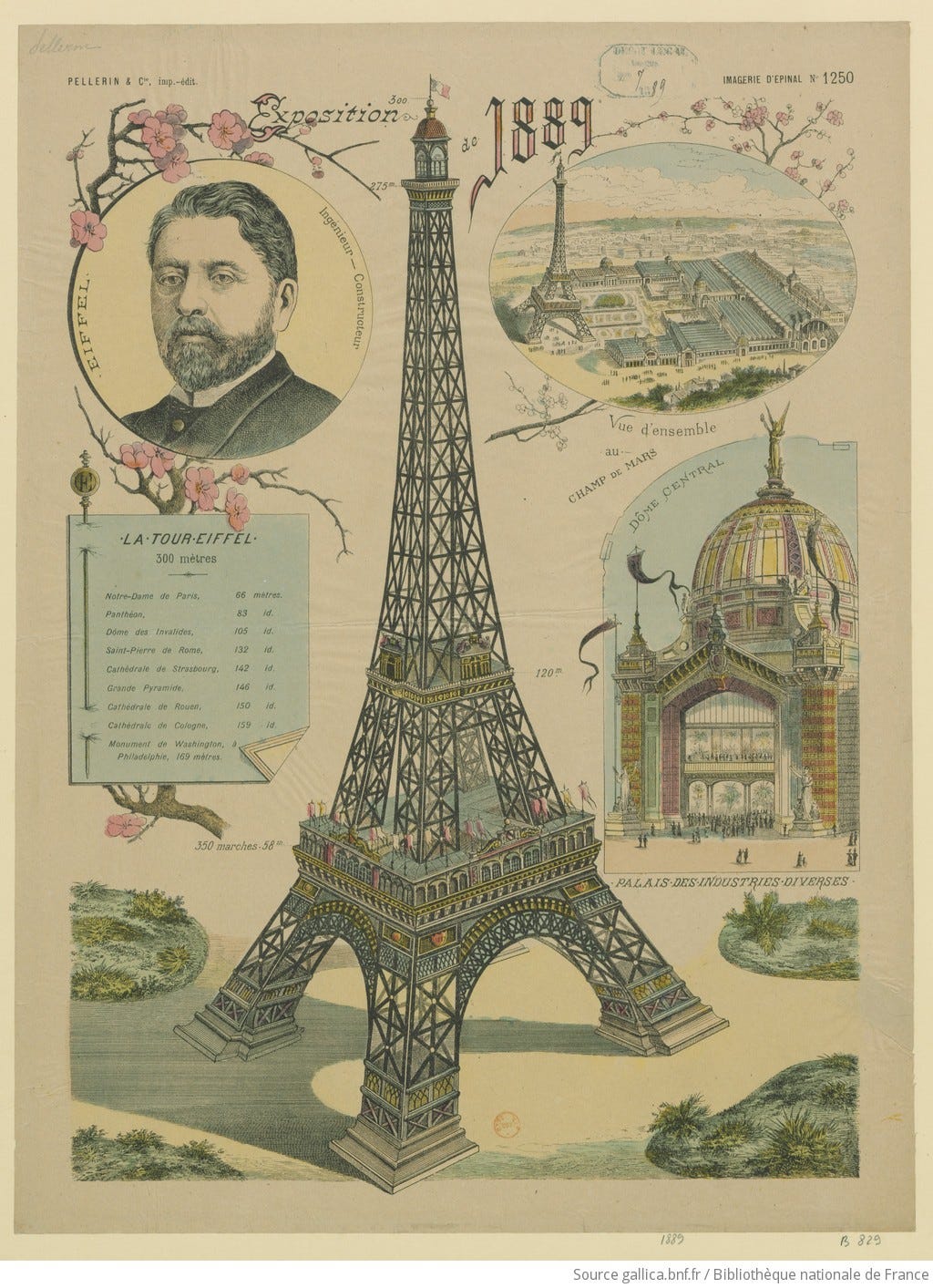
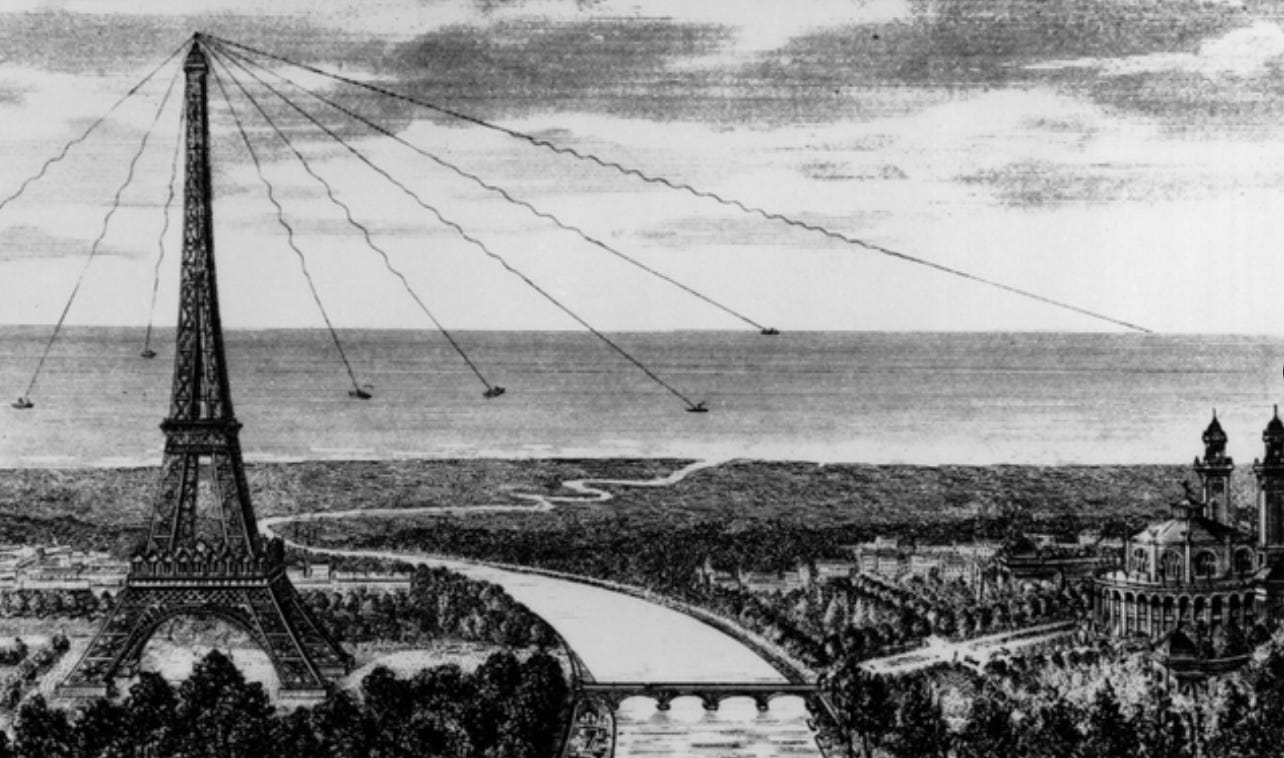
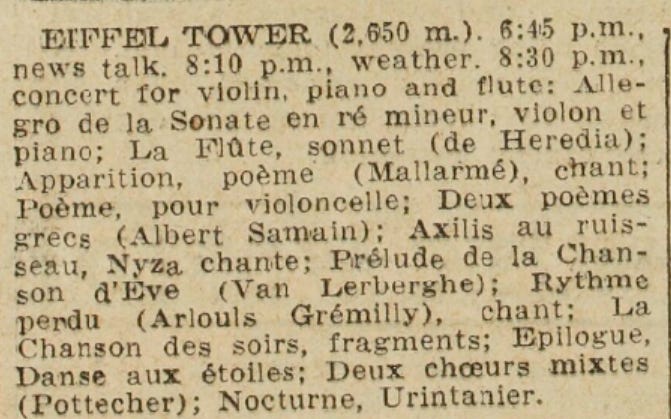
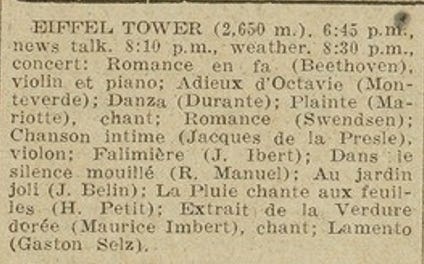
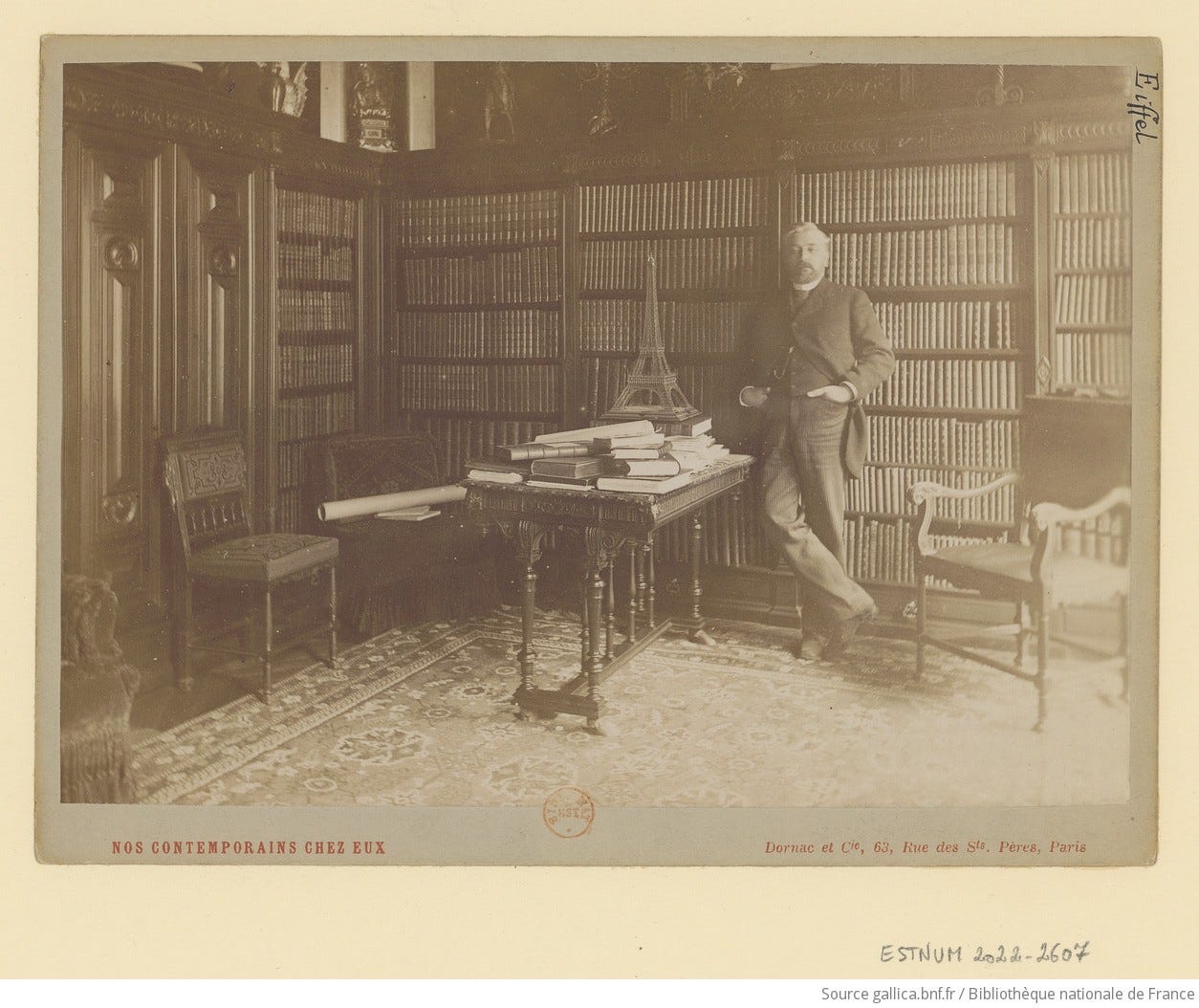
Great story, Jenn! I have always found the beginnings of the Eiffel Tower incredibly interesting!
Glad the tower had a life beyond its initial use at the exposition. It’s perhaps the one great defining Parisian landmark.